Nyheter
Polygon (MATIC) Research Primer
Publicerad
2 år sedanden
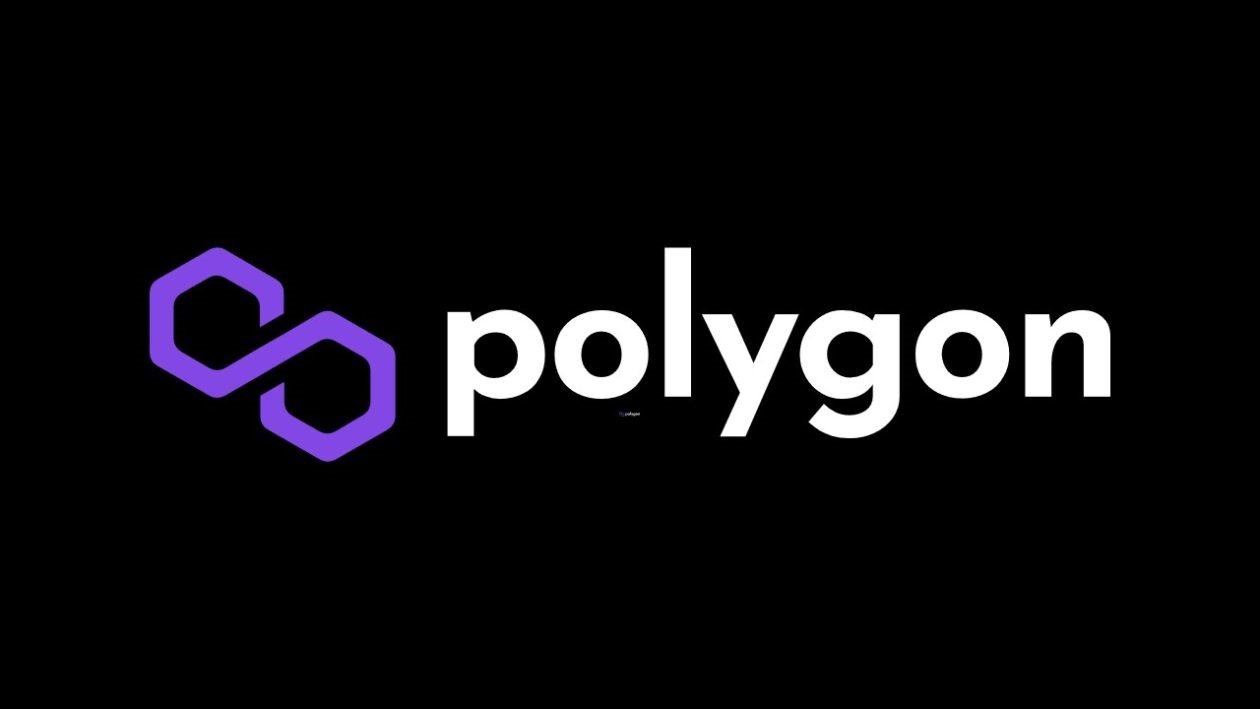
Polygon is an Ethereum scaling solution as well as a platform to connect Ethereum-compatible blockchains. The key features that Polygon provides include modular security through validators, sovereignty with a customizable tech stack, economical transaction cost and instant transaction finality on the main chain. The network is also designed for high customizability, extensibility and upgradability with short time-to-market community collaboration.
The Polygon foundation, started in 2017, is based in Bangalore, India and the British Virgin islands. It was founded by Jaynti Kanani, Sandeep Nailwal, Anurag Arjun and Mihailo Bjelic. Originally known as Matic, the entity went through a rebranding to Polygon in February 2021 and released its flagship product a year before in June 2020.
In this report, we will offer an exhaustive overview of the Polygon network, Matic as a cryptoasset, and discuss the various investment risks associated with Matic — in addition to how an investor can think about the future value of its underlying cryptoasset. This report offers an exhaustive coverage of Polygon PoS and Matic available on the market.
How Polygon PoS Works
The value proposition of Polygon PoS is to create a network of different blockchains and smart contracts that will be connected to the Ethereum blockchain with the objective to augment the efficiency, in other words, the transaction capacity and speed of the Ethereum blockchain. Polygon’s PoS tech stack is as such removing computation and transactions’ storage from the Ethereum blockchain to these different blockchains, also dubbed sidechains.
What helps distinguish Polygon amongst the other promising scaling solutions is that the network extends beyond a singular provision of its flagship product, the Polygon commit chain. The platform brings in connectivity amongst other scalability applications including individual chains also called plasma chains and other L2 applications such as Optimistic and Zero-Knowledge (ZK) rollups. Additionally, Polygon provides a development framework designed to launch native applications and sovereign blockchain compatible with Ethereum. First, are stand alone chains – independent networks that rely on their own security and personalized consensus mechanism, which make them fitting for prevalent projects as it’s easier to integrate their strong communities into serving as validators and securing the network. Second, are secured chains – networks anchored to Ethereum which utilize security-as-a-service for directly leveraging the reliability of ETH through validity and fraud proofs, or by a set committee of Polygon validators where their underlying smart contract logic resides on the Ethereum main chain, resembling a correspondent model to Polkadot’s shared-security archetype.
As seen, Polygon seeks to cater to crypto’s wider expansive ecosystem by serving as an AWS-like open-source aggregator of scaling solutions for developers. This is manifested with their offering of Polygon SDK, Polygon Avail (data availability layer for independent blockchains), Polygon’s Hermez and Miden (ZK-rollup-based ETH scaling solutions), interoperability protocol for data interchange along with 2-way-pegged bridges for cross-chain asset exchangeability. And finally, Polygon’s commit-chain, where most of the activity currently exists.
On this note, it’s important to realize how Polygon’s main chain stacks differently from other side-chains, and how its security is improved upon by virtue of making it more reliant on Ethereum’s base layer security. Understanding the POS architecture will delineate the relationship between the 2 chains – particularly when viewing the staking and checkpointing logic.
Polygon uses the Proof-of-Stake consensus mechanism and a unique crypto-based architecture to run its most widely used commit-chain, consisting of three layers:
- The Ethereum layer: a set of contracts on the Ethereum network.
- The Heimdall layer: a set of proof-of-stake Heimdall nodes (ie, downloaded softwares in computers) running in parallel to Ethereum and monitoring the set of contracts on the Ethereum network.
- The Bor layer: a set of block-producing Bor nodes shuffled by Heimdall nodes.
Polygon validators intermittently perform periodic proofs of blocks produced by block producers in a Block Producer Layer (Bor layer) against the Ethereum blockchain. These checks settle any transaction disagreements that happen on the Polygon sidechain through a cryptographic proof for the Proof-of-Stake model. Staking is done on a set of smart contracts on the Ethereum network. Heimdall nodes monitor the set of smart contracts for the staked tokens on the Ethereum network and select Bor nodes to produce blocks on the Polygon PoS network. Bor nodes produce blocks in rounds, called spans, based on the selection by Heimdall nodes, which in turn is done based on the staked token amounts on the Ethereum network.
The process of transaction verification by network participants is done as follows: MATIC token holders (delegators) choose validators and then delegate staked tokens to them in exchange for a portion of the validators’ revenue. The Heimdall architecture chooses random block producers (miners) from a random pool of PoS validators in the MATIC network to verify transactions. Every validator set change will be relayed by the validator node on Heimdall which is embedded onto the validator node. This allows Heimdall to remain in sync with the Polygon PoS contract state on the Ethereum mainchain at all times. The Polygon PoS Chain contract deployed on the mainchain is considered to be the ultimate source of truth, and therefore all validation is done via querying the contract of the Ethereum blockchain. This practically translates to leveraging Ethereum-based finality, as well as providing a safe mechanism to restore the Polygon chain state in the event of a catastrophe through the aforementioned checkpoints.
Both delegators and validators share the risk and reward of the validation process. Validators stake their MATIC tokens on the Ethereum blockchain. If a validator acts maliciously by double-signing or has significant downtime, their stake may be slashed.
The Polygon community has been committed to building a strong staking ecosystem as they eventually move to be completely decentralized. Validators are rewarded in proportion to their Matic staked. As of writing, a total of $2.39 billion worth of MATIC has been staked, which accounts for 27.79% of all available Matic.
The MATIC Token
Polygon’s native coin MATIC is an Ethereum-based ERC-20 token that powers the Polygon network. Users can place their Ether in a Polygon smart contract, converting any value denominated in Ether (ETH) into MATIC at a 1:1 peg. Users can also withdraw back into the Ethereum blockchain in ETH.
Similar to Ether for Ethereum network, MATIC plays an important role in securing the network.It has a maximum supply of 10 billion tokens, with a current circulating supply of 6.6 billion. On a high level, the currency is used as a utility token to pay for fees, powering transactions, when issuing transfers or interacting with smart contracts. Matic can also be used in staking to secure the Proof Of Stake network as validators in return for staking rewards.
Token Distribution
The initial distribution of the matic token consisted of :
• Private Sale tokens comprise 3.80% of the total supply of 10 billion:
→ Seed Round: Sale conducted at a rate of 1 MATIC = 0.00079 USD and raised a total of USD 165,000, selling 2.09% of total token supply.
→ Early Supporters: sale conducted at a rate of 1 MATIC = 0.00263 USD and raised a total of USD 450,000, selling 1.71% of the total token supply.
• Launchpad sale tokens comprise 19% of total supply. It was conducted in April 2019 for a total raise of ~$5,000,000 USD worth of BNB at ~$0.00263 per token for 19% of the total token supply. The BNB to MATIC rate will be determined on the day of the sale.
• Team tokens comprise 16% of the total supply.
• Advisors tokens comprise 4% of the total supply.
• Network Operations tokens comprise 12% of the total supply.
• Foundation tokens comprise 21.86% of the total supply.
• Ecosystem tokens comprise 23.33% of the total supply
The token release schedule is set to be completed by October 2022.
The State Of Polygon
The Polygon ecosystem experienced exponential growth in Q2 of 2021 with Total Locked Value (TVL) at $115 million at the end of March to a peak of $10.5 billion in June 2021. It is worthy to note that despite the market crash on May 19th 2021, the network was able to sustain a rise in TVL and growth, peaking in June. This was also instigated by $40 million worth of incentives launched in partnership with Aave to lenders and borrowers on Aave’s Polygon market. This distribution accounted for 1% of the total Matic supply. The incentive program was a part of a wider plan to make DeFi on Ethereum more scalable and inclusive as an alternative to traditional finance with the drastic reduction of fees on Polygon when compared to Ethereum.
As one of the easiest to use and integrate commit chains, the Polygon ecosystem currently has 500+ dapps spanning DeFi, gaming, NFTs, exchanges and cross-blockchain solutions. The rise of Polygon dapps is widely attributed to the EVM compatibility of the Layer 2 scaling solution and ease for Ethereum projects to launch on Polygon. Aside from the liquidity mining incentives that drew users to the network, yield farming opportunities with drastically reduced fees were also attributed to the sudden rise in TVL. As of September 2021, Quickswap is the leading decentralized exchange (DEX) on Polygon PoS with daily trading volume in excess of $100 million and 15.4K users . DEX daily and total revenues from various chains are depicted as a comparison below. PancakeSwap is the primary DEX for Binance Smart Chain and Pangolin is the primary DEX for Avalanche.
Polygon is often depicted as a Layer 2 solution for Ethereum scalability. However, by definition, for a network to be considered a Layer 2, it must derive its security from a Layer 1 like Ethereum. This would mean that users would not have to rely on the validators for the security of their funds. The current architecture of Polygon as a PoS sidechain with its own validators is therefore defined and considered by many as a Layer 1. The adaptability of Polygon’s architecture may see the network evolving to integrate ZKrollups, Optimistic rollups and standalone side chains in the future, with Layer 2 like characteristics.
The current network utilization rate can be represented by several key metrics. Polygon has recorded 836.74M transactions since its launch, with over 74M unique addresses on chain of which over 200,000 are active on the network. Reviewing the performance of Matic in the last year the YTD growth is 6,768%, current validator staking APR is at ~11%, with the network supported by 100 distributed validators and 15 RPC nodes (September, 2021). In October 2021, the active Polygon PoS chain addresses overtook Ethereum to a record high of 566,516 unique daily addresses. This accounts for a 168% growth in 30 days compared to Ethereum’s 0.6%.
The Future of Polygon
The arrival of Ethereum 2.0 , often referred to as ‘the Merge’ will enable better security, faster and more economical transactions on the Ethereum network, bringing the question to many: Will Polygon be able to maintain its relevance?
The recent rise of competing Layer 2s to meet the scaling problem of Ethereum such as Optimism, Arbitrum, Starkware, Loopring and many others has diverted much of Polygon’s initial TVL to other chains. As of September, not including Polygon, Arbitrum is the leading Layer 2 with 59% of the remaining market share equalling to $1.45B, the current TVL of Polygon is approximately $4.5B, down from its $10.5B peak.
Optimistic rollups use fraud proofs, the resolution of theses on the Layer-1 base chain involves a challenge of state changes. The way in which these rollups are validated makes moving tokens from a rollup to its Layer-1 base chain extremely time consuming. Typical exit times between rollups and Layer-1 base chains vary between a day and a week. In comparison to Optimistic rollups, the withdrawal of assets from the Polygon network usually takes 45 minutes, with the exception of Matic withdrawal, which takes seven days.
The time delay in the asset withdrawals from Layer 2 solutions can play an important role in the decision making process in the cross-chain distribution of assets. Particularly, in a time of market volatility, quick access to liquidity and the ease of asset movement are crucial for DeFi users. There are multiple projects working on possible solutions to mitigate this risk, manage challenge-period inefficiencies and minimize opportunity costs associated with this period. Not only will these solutions provide cost savings but it may also enable cross-rollup composability of applications in the future. To remain competitive, Polygon has an ambitious roadmap to implement optimistic rollups, ZK-rollups and Validium chains. Most notable in their recent progress was a $250 million deal made with Hermez, open-source ZK rollup scaling project, in August 2021.
The future of Polygon will likely see a greater number of dapps verticals taking advantage of the network’s ultra low cost transaction fees.The drastic reduction in transaction fees compared to any other chain, can lower the barrier for entry and use for new DeFi users. One prime example is the number of users on Aave on Polygon vs Aave on Ethereum. Despite the TVL on Ethereum being over $12.B and only $1.9B on Polygon, there are 26,000 Users on Polygon vs 10,000 on Ethereum.
At the end of July, Binance also announced that users could withdraw Matic directly from and onto the protocol’s mainnet. This integration granted a direct, low cost, seamless route for onboarding into Polygon PoS without having to bridge through Ethereum. These established avenues of capital flow that Polygon provides for new DeFi users will without a doubt serve Polygon well in the future. As we see a greater flow of capital from centralized exchanges into DeFi, the ease of this onboarding process will play a critical part on which scaling solution will come out on top.
Notable partnerships include DraftKing’s announcement to use Polygon to support custom NFT drops and secondary-market transactions. Ernst & Young also recently selected Polygon to deploy EY blockchain solutions, demonstrating the trend of professional services to onboard blockchain solutions for transaction verification that prioritise privacy technologies whilst supporting regulatory compliance.
Aside from the advantage of Polygon PoS’s EVM compatibility reducing the friction for developers building on Polygon, the network’s ability to aggregate scaling solutions is a definitive competing edge. Rather than focusing on one scaling solution like Optimism, Arbitrum or Starkware, it is designed to be adaptable and to accommodate multiple Layer 2 solutions. Polygon envisions and provides the base infrastructure for the future of cross chain interoperability, similar to Polkadot.
Valuing Polygon
There are two ways we can think of the potential value of Polygon’s native asset, Matic. The first is carrying out a market sizing exercise to compare its value to that of its main competitors as its target market. Secondly, we can compare Polygon’s current adoption — through the proxy of fees paid on the network — to that of Ethereum in order to understand if the current value of Polygon can be justified whether there’s product-market fit.
Market Sizing:
The chart below shows the current market capitalization of Solana, Polygon, Ethereum, and Binance Smart Chain. Ethereum represents what the market has judged, as the current best use-case of blockchain technology while the smart contracts use case can be argued to be just as valuable in the long term. Binance Smart Chain and Solana are networks that similarly experienced substantial growth in the first half of 2021 and serve as comparison for ecosystem development.
Total Value Locked
This section compares the current TVL of Polygon relative to other major networks such as Ethereum, Binance, Terra, Solana and Bitcoin. TVL can be a useful tool to compare network utilization and a method to measure the flow of capital within DeFi.
Fees
Revenue generation is often a key metric when assessing network value. By assessing the total number of transactions and the average cost per transaction we are able to estimate the total revenue generated. Fees are a good signal for the overall demand for a given smart contract platform and arguably the strongest barometer of fundamental growth. Polygon’s 881.46M transactions give an estimated annualized revenue of $14.1 million. Ethereum’s annualized revenue stands at $13.32 billion.
Price-to Sales (P/S) Ratio compares a protocol’s market cap to its revenues. Unlike the Price to Earnings ratio, where inflated token prices can be inaccurately depicted, P/S ratio derives the network’s value from tangible revenues. This metric is particularly useful for early-stage protocols where income is often reinvested into growth. A relatively low ratio like Polygon compared to other competitors like Solana and Avalanche, could imply that the protocol is undervalued and vice versa (Token Terminal, 2020). An evaluation of historic P/S ratio against its market cap can also demonstrate the consistency of fees and revenue. This chart indicates the P/S ratio for other Layer 1s in comparison to Polygon PoS.
Risks
Unlike Proof of Work (PoW) networks that require miners to contribute computing power to secure the network, PoS crypto networks require users to stake a share or all of their holdings in the network’s token to secure the network and keep it running.
Liquidity risk: Illiquidity of staking returns to be converted into bitcoin or stablecoins may be difficult if there is little to no volume of the staked asset. Polygon PoS has a lock up period of 8-10 days.
Rewards duration: Like lockup periods, some staking assets may not pay out staking rewards daily and make re-investments delayed. Polygon PoS pays out every 8-10 days.
Validator risk: Running a validator node may run the risk for incurring penalties if a disruption or double-signing occurs (slashing). Slashing is designed to incentivize node security, availability, and network participation.
Slashing: If a validator misses a certain number of validations or engages in certain manipulative acts on the network, staked assets may be slashed (ie. claimed by the network as a fine). This risk is minimal under normal operating conditions.
Technological risks: A double spending bug in Polygon’s Plasm bridge was identified in October 2021, the code relates to a contract that locks up to 1 billion USD worth of funds on Layer 1 and is utilized when users move funds to and from the Polygon network. Fortunately, the existence of Polygon’s bug bounty program on ImmuneFi helped identify and rectify the vulnerability before it could be exploited23. Gerhard Wagner discovered the vulnerability which could have led to a string of attacks totalling approximately $850 million, it took 30 minutes for Polygon to begin fixing the issue and Wagner was subsequently awarded with $2 million from the bug bounty program.
Disclaimer
This report has been prepared and issued by 21Shares AG for publication globally. All information used in the publication of this report has been compiled from publicly available sources that are believed to be reliable. However, we do not guarantee the accuracy or completeness of this report. Crypto asset trading involves a high degree of risk. The crypto asset market is new to many and unproven and may have the potential to not grow as expected.
There is currently relatively little use of crypto assets in the retail and commercial marketplace compared to relatively large use by speculators, thus contributing to price volatility that could adversely affect an investment in crypto assets. In order to participate in the trading of crypto assets, you should be capable of evaluating the merits and risks of the investment and be able to bear the economic risk of losing your entire investment. Nothing in this report does or should be considered as an offer by 21Shares AG and/or its affiliates to sell or Maticicitation by 21Shares AG or its parent of any offer to buy bitcoin or other crypto assets or derivatives. This report is provided for information and research purposes only and should not be construed or presented as an offer or Maticicitation for any investment. The information provided does not constitute a prospectus or any offering and does not contain or constitute an offer to sell or Maticicit an offer to invest in any jurisdiction.
Readers are cautioned that any such forward-looking statements are not guarantees of future performance and involve risks and uncertainties.Actual results may differ materially from those in the forward-looking statements as a result of various factors. The information contained herein may not be considered as economic, legal, tax, or other advice and users are cautioned against basing investment decisions or other decisions Maticely on the content hereof.
Du kanske gillar
-
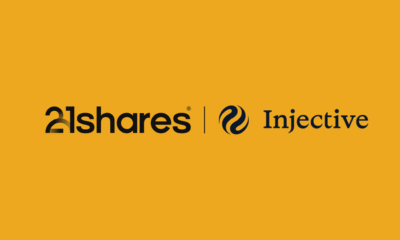

Primer: Injective, infrastructure for global finance
-
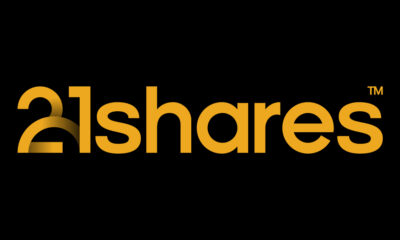

Bitcoin is resilient despite the Middle East war
-


Svenska investerare — 21Shares Nasdaq Stockholm-sortiment har just blivit starkare
-


UK looking to lift the retail ban on crypto ETPs
-
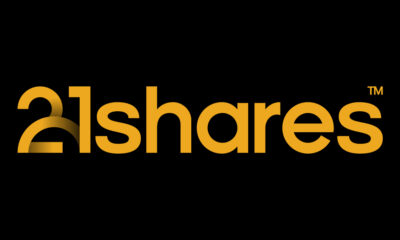

21Shares noterarar fem nya krypto-ETPer Nasdaq Stockholm
-
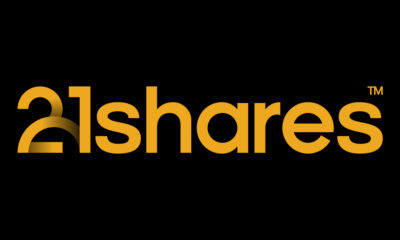

Bitcoin ETFs are cheaper than crypto stocks. Here’s why

De senaste månaderna har det varit större förändringar på denna lista än normalt. Under juni 2025 förändrades listan på de mest eftersökta ETFerna åter kraftigt, vilket numera är ganska normalt. Denna månad var det hetaste investeringstemat i månadsutdelande ETFer . Vi noterar är att Montrose befäster sin position som den populäraste ETFen på Etfmarknaden.se samtidigt som listan är mer koncentrerad än tidigare.
Det går att handla andelar i dessa ETFer genom de flesta svenska banker och Internetmäklare, till exempel Nordnet, SAVR, DEGIRO och Avanza.
Månadsutdelande fonder tilldrar sig stort intresse
Den 6 november förra året, bara dagar efter att vi publicerat en artikel om månadsutdelande fonder, lanserade JP Morgan en helt ny variant av en månadsutdelande fond. JPMorgan US Equity Premium Income Active UCITS ETF USD (dist) (JEIP ETF) med ISIN IE000U5MJOZ6, är en aktivt förvaltad ETF.
Den börshandlade fonden investerar i företag från USA. Ytterligare intäkter söks genom användning av en överlagringsstrategi med derivatinstrument. Denna ETF strävar efter att generera en högre avkastning än S&P 500-index.
Detta ledde till att vi fick uppdatera vår artikel om månadsutdelande fonder med JEIP men också med JPMorgan Nasdaq Equity Premium Income Active UCITS ETF USD (dist) (JEQP ETF) med ISIN IE000U9J8HX9, som är en aktivt förvaltad ETF, men som mäter sig mot Nasdaq-100 istället.
Under den sista veckan i februari 2025 noterade Montrose den första svenska ETFen på fem år. MONTDIV ETF är Sveriges första månadsutdelande ETF och rusade snabbt på listan efter de mest eftersökta börshandlade fonderna på vår sida. Det finns emellertid en hel del andra ETFer som ger utdelning varje månad. Vi uppdaterar löpande denna artikel.
När kommer utdelningen från MONTDIV?
Som nämnts så är MONTDIV den allra populäraste börshandlade fonden på vår sida. Tillsammans med sin syster ETF, MONTLEV, är de även populära på andra håll. Fram till idag har MONTDIV lockat närmare 300 miljoner kronor och seglat upp som den tredje mest ägda i Sverige. Dessutom stod Montroses två ETFer för vart fjärde ETF-avslut på Stockholmsbörsen (ex. Bull/Bear-produkter) under perioden mars-april 2025. Det ser vi som ett kvitto på att det finns en stor efterfrågan på börshandlade fonder.
ETP, ETF, ETC, ETN, ETI
Många är osäkra på terminologin när det gäller börshandlade produkter och vi ser dels hur de söker – och hittar många av de informativa artiklar som vi skrivit på Etfmarknaden.se, men också vår ordlista som förklarar det mesta som kan verkar förvirrande. En av våra äldre artiklar, Vad är vad? ETP, ETF, ETC, ETN och ETI från september 2012, har nu helt plötsligt dykt upp som en av de mer lästa artiklarna.
Fortsatt intresse för försvarsfonderna
Vilken ETF för försvarsindustrin är bäst och hur investerar man i denna sektor med hjälp av börshandlade fonder? I dag finns det flera ETFer som ger exponering mot flyg och försvar som följer tre olika index. De årliga förvaltningskostnaderna ligger 0,35 och 0,55 procent. Vi har skrivit en artikel om olika försvarsfonder. Du hittar mer om ETFer för försvarsindustrin här.
Utöver detta har samtliga de större aktörerna lanserat en en börshandlad fond för den europeiska försvarsindustrin vilka alla blirvit stora succcéer.
Inte längre populärast av dem alla
XACT Norden Högutdelande är utan tvekan en av de mest populära av alla de ETFer som vi har skrivit om på vår sida. Den kvartalsvisa utdelningen och dess satsning på aktier med en låg volatilitet och hög direktavkastning gör det till en populär fond som återfinns i mångas depåer. Nyligen lämnades årets andra utdelning från denna börshandlade fond.
Hur högt kommer vi när du Googlar på ordet ETF?
Under maj 2025 såg vi många sökningar på begreppen ETF, börshandlad fond och Etfmarknaden. Om det var vår egen sida eller om det var den totala marknaden för ETFer som besökarna sökte på vet vi inte, men efter att ha fått mail från en av de större emittenterna vet vi att de försöker kartlägga de svenska placerarnas exponering mot börshandlade fonder.
Om du söker på ordet ETF på Google, hur högt hamnar vi då?
Investerna söker information om försvarsfonder med fokus på Europa
Wisdomtree har under året lanserat en försvarsfond som investerar i europeiska företag, vilket även HANetf har gjort, kortnamnet är ARMY i London och 8RMY på tyska Xetra.
Populariteten för europeiska försvarsbörshandlade fonder (ETF:er) har ökat kraftigt på senare tid, drivet av betydande inflöden som återspeglar ett växande investerarintresse för sektorn. Dessa imponerande inflöden understryker det ökande erkännandet av försvarssektorns tillväxtpotential mot bakgrund av den nuvarande geopolitiska dynamiken.
SAVRs ETF-satsning skapar stort intresse
SAVR har precis valt att lansera handel med börshandlande fonder. SAVR som tidigare varit kände för att erbjuda handel med traditionella fonder har nyligen valt att lansera handel med aktier, men också med ETFer på framför allt tyska Xetra. På denna marknad erbjuder nu SAVR med flera ETFer än vad både Nordnet och Avanza gör.
Samtidigt har SAVR valt att lansera en egen produkt tillsammans med amerikanska Vanguard, SAVR Global by Vanguard.
Halalfonder är nu hetare än ESG
Tidigare var det många som sökte på begreppet ESG, men detta sökord har fallit från listan under de senaste månaderna. En variant av ESG-fond är de fonder som har en islamistisk inriktning, så kallade halalfonder, och det är fortfarande något som våra besökare letar information om. En sådan fond är ASWE, som är en aktivt förvaltad shariafond men till exempel HSBC har en serie fonder med fokus på att investera enligt islam. Det är ingen speciell enskild fond som sticker ut och lockar mer än andra.
Går det att handla ETFer hos Swedbank?
Swedbank ETF tror vi kan tolkas att det endera finns intresse för att veta om Swedbank har ETFer i sitt utbud, eller om det går att handla börshandlade fonder på Swedbank. Svaret på denna fråga återfinns här.
Räntesänkningar ökar intresset för fastigheter
Ett annat begrepp på listan är ETF fastigheter. Allt fler investerare tror att vi kommer att få se ytterligare räntesänkningar, inte bara i Sverige och Europa, men även i USA. Lägre räntor gör det enklare att räkna hem en investering i fastigheter. Kan det vara så att våra besökare undersöker möjligheterna att positionera sig i en ETF för fastigheter innan räntorna sänks för att de tror att det kommer att leda till en uppvärdering av fastighetsbolagen? Vill du ha några idéer så skrev vi en text om börshandlade fonder som investerar i fastigheter.
Du kan även läsa den text vi skrev i januari 2025 som heter 10 ETFer för att investera i fastigheter.
Är det värt att satsa på tyska aktier?
Många söker information om tyska aktier och tyska fonder. I mars publicerade vi en text som hette De bästa börshandlade fonderna för tyska utdelningsaktier. Kan det vara denna som lockar?
En investering i tyska utdelningsaktier, i alla fall sådana med hög utdelning anses av många vara en solid investering. Utdelning betalas vanligtvis av lönsamma och etablerade företag. För investerare som söker regelbunden inkomst i tider med låga räntor kan tyska utdelningsaktier ge attraktiv avkastning.
Det finns två huvudindex tillgängliga för att investera med ETFer i tyska högutdelningsaktier. Denna investeringsguide för tyska utdelningsaktier hjälper dig att navigera mellan särdragen hos DivDAX®-index och DAXplus® Maximum Dividend-index samt de börshandlade fonder som spårar dem. Det gör att du kan hitta de mest lämpliga ETFerna för dig genom att rangordna dem enligt dina preferenser.
Amerikanska large caps är något många vill veta mer om
Fonder som följer S&P 500 är, föga förvånande, en typ av fonder som det finns stort intresse kring. Det är ingen speciell enskild fond som sticker ut och lockar mer än andra. Det skall emellertid noteras att många sökningar sker på ord som ”Fond som följer S&P500 Avanza”. Vi skrev tidigare en artikel om S&P500 fonder, 26 börshandlade fonder som spårar S&P500 där vi jämförde alla de ETFer som spårar detta index i sin grundform.
BNP lanserade en europeisk försvarsfond i maj
BNP Paribas Asset Management (’BNPP AM’) tillkännagav idag noteringen av sin BNP Paribas Easy Bloomberg Europe Defense ETF på Euronext Paris, snart tillgänglig på Deutsche Börse Xetra, Borsa Italiana och SIX Swiss Exchange. Den handlas under kortnamnet BJL8 på tyska Xetra.
Investera i Polen med börshandlade fonder
I början av april skrev vi en text som sammanfattade att Investera i Polen med börshandlade fonder. Det tog en liten tid, men den har dykt upp på listan bland de mest populära fonderna.
I slutet av samma månad meddelade SAVR att företaget nu erbjuder handel på mer än 700 polska aktier.
Du kan handla Ripple med olika börshandlade produkter
Valour Ripple (XRP) SEK är en börshandlad produkt som spårar priset på XRP, Ripples infödda token. XRP förbättrar främst globala finansiella överföringar och utbyte av flera valutor. Snabb och miljövänlig, den digitala tillgången XRP designades för att fungera som den mest effektiva kryptovalutan för olika applikationer inom finanssektorn.
Valour Ripple (XRP) SEK ETP (ISIN: CH1161139584) är en börshandlad produkt som spårar priset på XRP, Ripples infödda token.
XRP har ett börsvärde på 29,57 miljarder USD och rankas på en sjätte plats bland alla kryptovalutor globalt. Ripple XRP är en nyckelspelare inom det digitala valutaområdet, känd för sin användning för att underlätta snabba och billiga internationella pengaöverföringar. XRP fungerar på RippleNet och fungerar som en bryggvaluta i Ripples betalningsnätverk, vilket möjliggör sömlösa valutaväxlingar över hela världen. Detta har positionerat XRP som ett föredraget val för finansiella institutioner som söker effektiva alternativ till traditionella gränsöverskridande betalningsmetoder.
Är du nyfiken på vilka börshandlade produkter det finns för att investera i XRP? Vi har självklart skrivit en artikel om detta där vi jämför alla de börshandlade alternativ vi hittat.
BlackRock lanserar europeisk försvars-ETF för europeiska investerare
’I slutet av maj lanserade BlackRock iShares Europe Defence UCITS ETF (DFEU), en europeisk försvars-ETF för europeiska investerare, som följer STOXX Europe Targeted Defence Index. Fonden är utformad för att ge exakt exponering mot europeiska försvarsföretag genom ett intäktsbaserat urval i en tid då europeiska nationer ökar de offentliga utgifterna för att förbättra sin försvarskapacitet.
Det går att handla börshandlade fonder hos Nordea
Nordea har en plattform, och i denna handelstjänst erbjuder denna bank tusentals olika ETFer. Det går att handla ETFer med fokus på räntemarknaden, aktiemarknaden, landspecifika ETFer och börshandlade fonder med fokus på olika branscher. Att handla ETFer hos Nordea sker endera i Nordea Investor och nätbanken.
Månadsutdelande fond med fokus på Europa
Global X EURO STOXX 50 Covered Call UCITS ETF EUR Distributing (SY7D ETF) med ISIN IE000SAXJ1M1, syftar till att följa EURO STOXX 50 Covered Call ATM-indexet. EURO STOXX 50 Covered Call ATM-indexet följer utvecklingen av en täckt köpoption på EURO STOXX 50-indexet. En täckt köpoption kombinerar en lång position i en tillgång med försäljning av köpoptioner på denna tillgång.
Dyrare kaffe skapar intresse för börshandlade produkter
Det stigande kaffepriset (som du kan följa här) har lett till ett ökat intresse bland investerarna för att köpa en ETF som spårar kaffepriset. Det finns emellertid ingen ETF som spårar kaffepriset, då Eus regler kräver att det finns minst 16 olika komponenter i en ETF. Det finns emellertid ett par ETCer som gör samma sak, till exempel WisdomTree Coffee (OD7B ETC).
Investera i platina med börshandlade produkter
När en investerare har bestämt sig för vilken eller vilka metaller de vill köpa kvarstår frågan om ”hur investera i platina”. Det finns flera investeringsprodukter tillgängliga för potentiella platinaägare. I artikeln utforskar vi några av de vanligaste metoderna, och tittar på några av deras fördelar och nackdelar, för att hjälpa dig att fatta det beslut som bäst passar dina investeringsbehov och ambitioner.
Världens största fond
VOO är nu världens största börshandlade fond. Fredagen den 14 februari 2025 (Alla hjärtans dag), sista arbetsdagen före Presidents Day, firandet av George Washingtons födelsedag, kommer verkligen att komma ihåg som dagen VOO kunde överträffa SPYs enorma AUM (631,9 miljarder USD respektive 630,4 miljarder USD).
SPY, som lanserades 1993 och förvaltas av State Street SPDR ETFer, är fortfarande den överlägset mest likvida ETFen i världen och den första ETF som är tillgänglig för amerikanska investerare.
Introducerad 2010 och förvaltad av Vanguard, är VOO nu den största ETF i världen.
Indien är en marknad som många söker information om
ETF Indien är inte en specifik börshandlad fond, men förekommer i en mängd olika varianter. Det finns tydligen ett stort intresse för att investera i indiska aktier bland sidan besökare, och då är kanske en ETF ett bra sätt att göra det. Vi skrev under i början av året en artikel om olika Indienfonder. Sedan dess har det dykt upp ytterligare ett par ETFer med fokus på Indien så vi har uppdaterat artikeln.
Virtune attraherar åter intresse från spararna
I maj 2025 lanserade denna svenska förvaltare en ny produkt, Virtune Bitcoin Prime ETP är en fysiskt backad börshandlad produkt (ETP) designad för att erbjuda investerare ett säkert och kostnadseffektivt sätt att få exponering mot Bitcoin (BTC).
En bred satsning på råvarumarknaden
Fler och fler läsare söker information om råvarufonder. En av ETF som fått många sökningar är L&G Multi Strategy Enhanced Commodities UCITS ETF (EN4C ETF) syftar till att spåra resultatet för Barclays Backwardation Tilt Multi-Strategy Capped Total Return Index (”Indexet”).
Normalt sett är det samma fonder och börshandlade produkter som de nordiska investerarna söker på. Av den anledningen är det extra roligt att se att nya produkter hamnar bland de mest sökta. I detta fall är det Torbjörn Iwarsons råvarufond som lockar ett stort intresse. Det är Nordens enda riktiga råvarufond. Notera att just nu är råvarumarknaden är litet nedtryckt, så det är ett bra tillfälle att komma in billigt. Läs mer om Centaur Commodity Fund på deras hemsida.
WINC ETF en aktiv satsning på att skapa inkomster
iShares World Equity High Income UCITS ETF USD (Dist) (WINC ETF), med ISIN IE000KJPDY61, är en aktivt förvaltad ETF som investerar i företag från utvecklade marknader över hela världen. Titelurvalet baseras på kvantitativa (matematiska eller statistiska) prognosmodeller och ESG-kriterier. Dessutom syftar ETFen till att generera ytterligare intäkter genom att sälja köpoptioner och köpa terminer på utvecklade marknader med stora och medelstora index.
Nyheter
C9DY ETF investerar i företag med ett positivt bidrag till FNs hållbarhetsmål
Publicerad
6 timmar sedanden
30 juni, 2025
UmweltBank UCITS ETF – Global SDG Focus (C9DY ETF) med ISIN LU2679277744, strävar efter att spåra Solactive UmweltBank Global Investable Universe SDG PAB-index. Solactive UmweltBank Global Investable Universe SDG PAB-index spårar aktier från utvecklade och tillväxtländer över hela världen. Indexet syftar till att välja ut företag med ett positivt bidrag till FNs 17 Sustainable Development Goals (SDG). Aktierna som ingår filtreras enligt ESG-kriterier (miljö, social och bolagsstyrning). Dessutom beaktas EUs direktiv om klimatskydd.
ETF:s TER (total cost ratio) uppgår till 0,80 % p.a. UmweltBank UCITS ETF – Global SDG Focus är den enda ETF som följer Solactive UmweltBank Global Investable Universe SDG PAB-index. ETFen replikerar det underliggande indexets prestanda genom samplingsteknik (köper ett urval av de mest relevanta indexbeståndsdelarna). Utdelningarna i ETFen ackumuleras och återinvesteras.
UmweltBank UCITS ETF – Global SDG Focus är en mycket liten ETF med 13 miljoner euro under förvaltning. Denna ETF lanserades den 1 juli 2024 och har sin hemvist i Luxemburg.
Handla C9DY ETF
UmweltBank UCITS ETF – Global SDG Focus (C9DY ETF) är en europeisk börshandlad fond. Denna fond handlas på Deutsche Boerse Xetra.
Det betyder att det går att handla andelar i denna ETF genom de flesta svenska banker och Internetmäklare, till exempel DEGIRO, Nordnet, Aktieinvest och Avanza.
Börsnoteringar
| Börs | Valuta | Kortnamn |
| XETRA | EUR | C9DY |

VanEck Quantum Computing UCITS ETF A (QUTM ETF) med ISIN IE0007Y8Y157, syftar till att följa MarketVector Global Quantum Leaders-indexet. MarketVector Global Quantum Leaders-indexet följer företag världen över som är aktiva inom kvantberäkning.
Den börshandlade fondens totala kostnadskvot (TER) uppgår till 0,55 % per år. VanEck Quantum Computing UCITS ETF A är den enda ETFen som följer MarketVector Global Quantum Leaders-indexet. ETFen replikerar det underliggande indexets resultat genom fullständig replikering (genom att köpa alla indexkomponenter). Utdelningarna i ETFen ackumuleras och återinvesteras.
Den börshandlade fondens lanserades den 21 maj 2025 och har sitt säte i Irland.
Kvantberäkning övergår från teori till verklighet och lovar att omdefiniera vad som är beräkningsmässigt möjligt. Som Europas första fångar VanEck Quantum Computing UCITS ETF potentialen hos en av vår tids mest transformerande teknologier. Medan tidiga användningsfall framträder, är kommersiell framgång fortfarande osäker, och finansiell exponering kan sträcka sig bortom renodlade kvantberäkningsföretag.
- Tidig, diversifierad tillgång till en potentiell banbrytande teknologi
- Exponering mot företag som driver forskning, utveckling och tillämpning av kvantberäkning
- Inkluderar nya framväxande renodlade innovatörer och globala teknikledare med verifierat starkt patentägande
Huvudsakliga riskfaktorer: Likviditetsrisk, koncentrationsrisk, risk att investera i mindre företag. Investerare måste beakta alla fondens egenskaper eller mål som beskrivs i prospektet eller relaterade dokument innan de fattar ett investeringsbeslut. Se KID och prospektet för annan viktig information innan du investerar. Marknadsutveckling garanteras inte.
Underliggande index
MarketVector™ Global Quantum Leaders Total Return Net Index (MVQTMLTR)
Handla QUTM ETF
VanEck Quantum Computing UCITS ETF A (QUTM ETF) är en europeisk börshandlad fond. Denna fond handlas på flera olika börser, till exempel Deutsche Boerse Xetra och London Stock Exchange.
Det betyder att det går att handla andelar i denna ETF genom de flesta svenska banker och Internetmäklare, till exempel Nordnet, SAVR, DEGIRO och Avanza.
Börsnoteringar
Största innehav
| Värdepapper | Ticker | Vikt % |
| Ionq Inc | IONQ US | 13,45 |
| D-Wave Quantum Inc | QBTS US | 10,01 |
| Rigetti Computing Inc | RGTI US | 8,13 |
| Boeing Co/The | BA US | 3,86 |
| Microsoft Corp | MSFT US | 3,66 |
| Synopsys Inc | SNPS US | 3,63 |
| Sony Group Corp | 6758 JP | 3,40 |
| Bank Of America Corp | BAC US | 3,38 |
| Honeywell International | HON US | 3,36 |
| Hitachi Ltd | 6501 JP | 3,35 |
| Wells Fargo & Co | WFC US | 3,28 |
| Deutsche Telekom Ag | DTE GR | 3,26 |
Innehav kan komma att förändras

Hetaste investeringstemat i juni 2025

C9DY ETF investerar i företag med ett positivt bidrag till FNs hållbarhetsmål

QUTM ETF Europas första fond för Quantumdatorer

De bästa ETFerna med fokus på momentum

USAH ETF investerar i amerikanska företagsobligationer och hedgar dem till euro

De bästa ETFer som investerar i europeiska utdelningsaktier

YieldMax® lanserar sin andra produkt för europeiska investerare

Nya börshandlade produkter på Xetra

3EDS ETN ger tre gånger den negativa avkastningen på flyg- och försvarsindustrin

Big News for Nuclear Energy—What It Means for Investors
Populära
-

 Nyheter1 vecka sedan
Nyheter1 vecka sedanDe bästa ETFer som investerar i europeiska utdelningsaktier
-

 Nyheter2 veckor sedan
Nyheter2 veckor sedanYieldMax® lanserar sin andra produkt för europeiska investerare
-
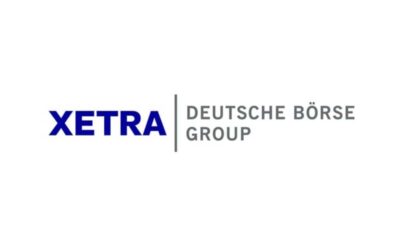
 Nyheter3 veckor sedan
Nyheter3 veckor sedanNya börshandlade produkter på Xetra
-

 Nyheter2 veckor sedan
Nyheter2 veckor sedan3EDS ETN ger tre gånger den negativa avkastningen på flyg- och försvarsindustrin
-

 Nyheter3 veckor sedan
Nyheter3 veckor sedanBig News for Nuclear Energy—What It Means for Investors
-

 Nyheter1 vecka sedan
Nyheter1 vecka sedanNordea Asset Management lanserar nya ETFer på Xetra
-

 Nyheter3 veckor sedan
Nyheter3 veckor sedanHANetfs VD Hector McNeil kommenterar FCAs kryptonyheter
-
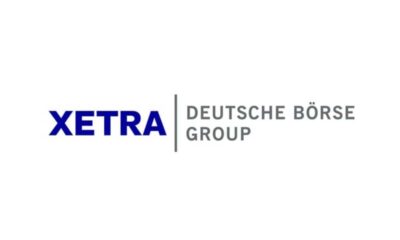
 Nyheter2 veckor sedan
Nyheter2 veckor sedanJPM noterar nya ETFer på Xetra och Börse Frankfurt


